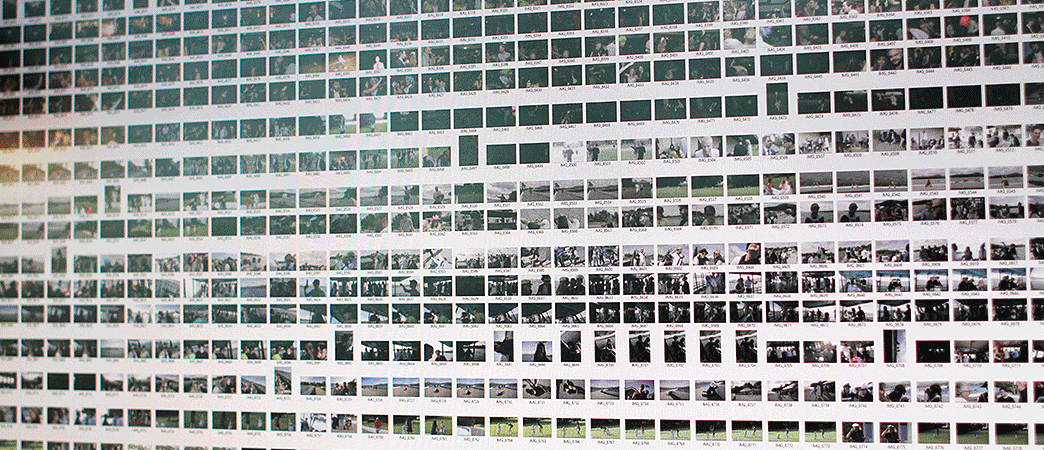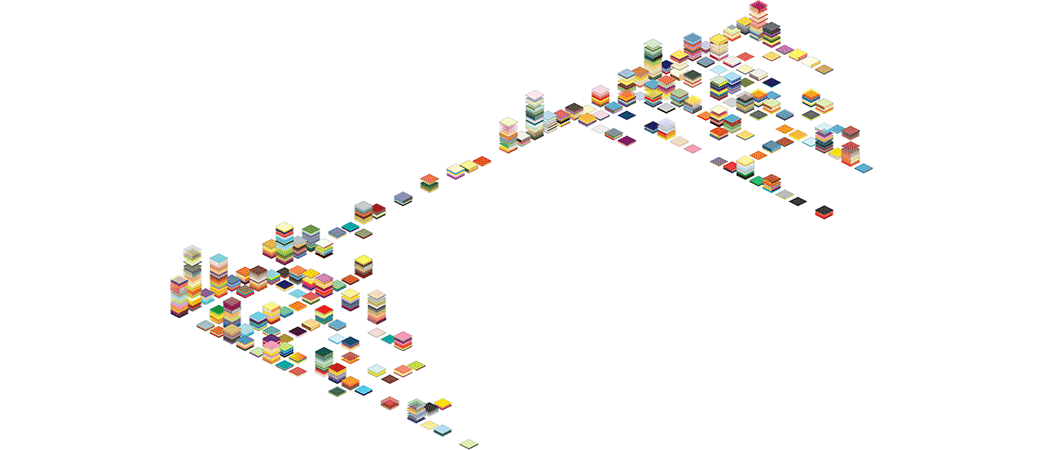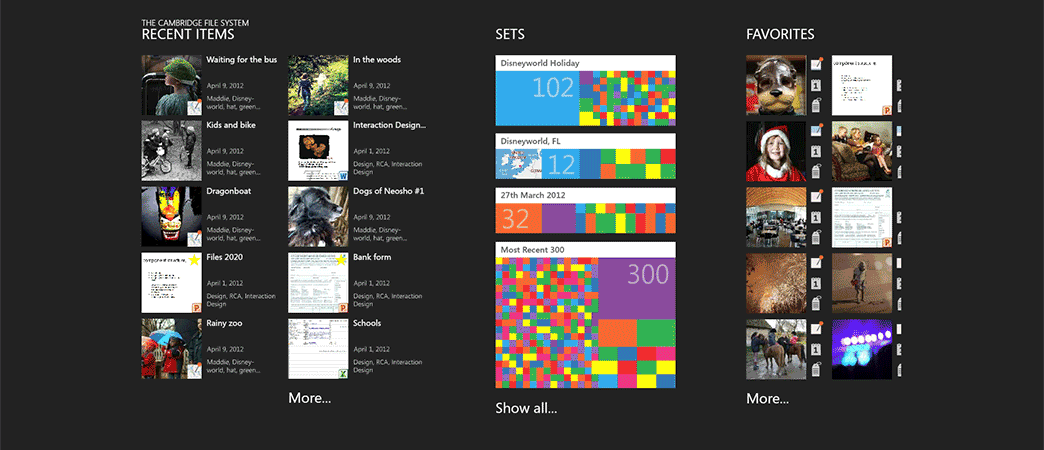Increasingly the things that matter to us live in the digital world, be they on computers and mobile devices, synced across Cloud services, generated as social media, or curated via sites like Pinterest. In this project we looked more closely at what digital possessions are, where they are hosted and stored, how users interact with them, and what this meant for their relationships with them. Do users feel like they possess this content? And does this concern them, or has the landscape of Cloud computing, Web 2.0, and operating systems that hide away folder hierarchies changed the way we think about our digital stuff? If possession is important, how might it be supported?

We drew on insights drawn from user research to reimagine how we might conceptualise the computer file and the grammar of action that is bound up with it. The metaphor of the computer file was conceived prior to the Internet and all that comes with it, such as Cloud computing, social network sites, and networked devices. It is our belief that the metaphor, and the actions that have traditionally been associated with it (Copy, Delete, etc.) are losing their salience in a networked world, where copies proliferate across services and devices, and deleting content carries new uncertainties.

There were two strands to the project. Firstly, we conducted research to understand how people experience and manage their digital content in a networked world. In this we included computer files that follow the traditional metaphor, such as digital photos, as well as newer forms of content, which are not file-like, such as social media profiles, playlists that are created via music streaming services, and user-generated content such as tweets. All raise interesting questions around ownership. Our research has indicated that people feel a less assured sense of possession over content stored in the Cloud, that mechanisms to allow them to ‘keep’ new forms of content are often lacking, and that sharing ownership of possessions has to be done differently when those possessions are digital rather than physical.

The second strand of this project lay in designing and engineering new representations of digital content, and a grammar of action to go alongside them. We explored how to represent large collections of digital content that are fragmented across multiple sites, and how to support users in acting upon the content stored within them. Our research intersected with work on privacy, collaboration, and emergent file-like forms such as metadata.
人员
Siân Lindley
Senior Principal Research Manager
Richard Banks
Principal Design Manager
Abigail Sellen
Distinguished Scientist and Lab Director

